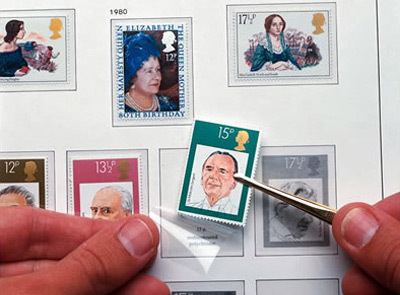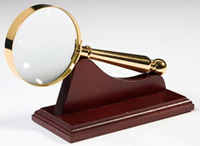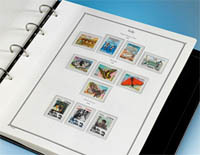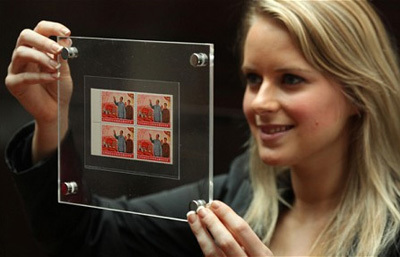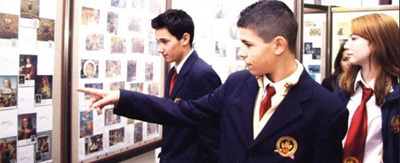Handle with Tweezers In any case, stamps as fragile little works of art deserve to be treated with due care. That is why every stamp collector, even the beginner, needs several essential tools:
When using tongs, place the blades close to the centre of the stamp to avoid damaging the perforations and do not apply too much pressure. From time to time, clean your tongs with a little dishwasher and dry before using.
A basic magnifying glass magnifies the object by two to three times, while pocket microscopes offer a magnification of thirty or more.
The advantage of modern folder type albums with removable pages is that 1), the pages lie flat when opened and 2), it is possible to add the pages and rearrange them as your collection expands. Loose-leaf albums can be single sided, with pockets for stamps on one side only, or double sided, with pockets on both sides of the page. Some albums come with pre-printed page names, which is useful for collectors who collect stamps by specific countries or regions. Albums with blank pages are especially suitable for thematic collections, such as ships, birds, flowers, etc. Serious collectors will, of course, insert page headings, either by own hand or pre-printed inserts - as a rule, before they insert the stamps. Stockbook albums come with clear pockets into which to fit the stamps, without the need for a mount. |
They are also very controversial in the stamp collecting world, because some collectors frown at the very idea of gluing anything to the back of their stamps. This practice, no matter how gently gummed and "peelable" that something might be, seems barbaric to them. Transparent mounts: With transparent fronts and either black or clear backing, these gummed pockets or strips have an important advantage of over hinges: instead of physically attaching the stamps to the pages, you place the inside protective plastic mounts, and then attach the mounts to the pages. More advanced collectors will probably want to have some additional tools, for example: Perforation gauge: Since differences to the normal perforation can also enhance the value of a stamp its value, you need aperforation gauge to measures the number of "teeth" contained within two centimetres. Watermark detectors: If you collect older stamps, you can usually identify the watermark by placing the stamp face down on a dark background. Sometimes you will need to put the stamp (also face down) in a watermark tray and add a few drops of or watermark fluid (lighter fluid works too, but it's highlyinflammable). However, watermarks on modern stamps, especially mint ones, are more difficult to identify, and for these you may need an electric watermark detector.
Colour guides: A standard colour guide for stamp collectors will enable you to tell the difference between 'mauve', 'purple', 'lilac', 'violet' and about two hundred other colours used on stamps. Ultra-violet lamps: If you specialise in collecting modern stamps, you will use an ultraviolet lamp to identify different papers and phosphor types. Avoid lamps which allow you to see the light of the bulb. "Hooded" lamps are both kinder to your eyes and more effective, because ultraviolet lightperforms best in the dark. Stamp catalogues: Stamp catalogues help identify different kinds of stamps and supply background information too. There are different catalogues for different themes, regions, periods, and most of them are regularly updated regularly to include the latest stamp releases. Other supplies and tools that can come in handy are stamp-lifting fluids that help remove stamps from paper when water soaking will not do; a dry book for drying the stamps that had been soaked; glassine envelopes for storing and sorting stamps before arranging them in an album; labels for personalising the albums; safes for keeping your valuable specimen in; and so on. And if you're not into it yourself - you may use the above as a guide to what gift to buy for an avid stamp collector.
| |
